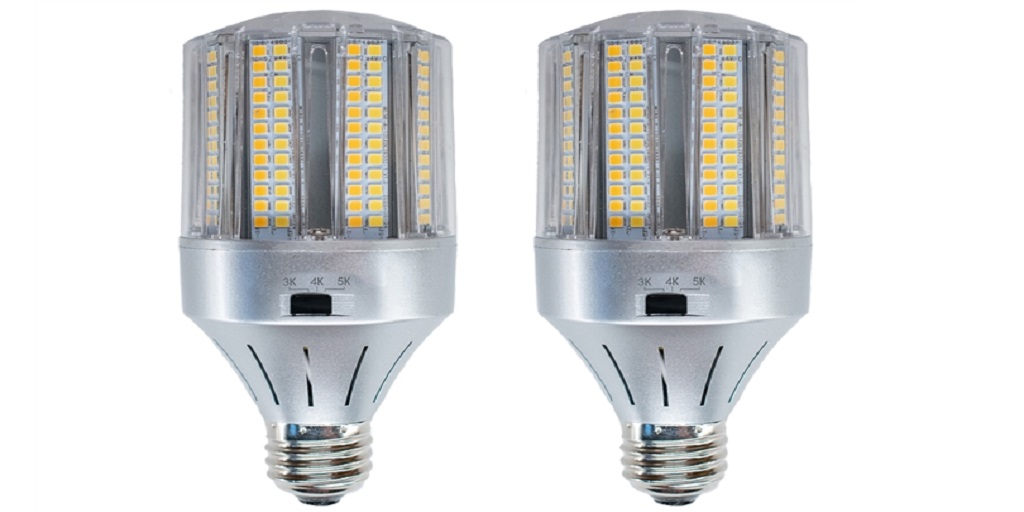
Illuminating your space with the right lighting solution is essential for creating a comfortable and productive environment. LED corn bulbs have gained significant popularity in recent years due to their energy efficiency, longevity, and versatility.
However, when it comes to selecting the ideal LED corn bulb for your needs, understanding the specifications is crucial. How do wattage and lumens impact the performance of LED corn bulbs?
Let’s delve into this topic and shed light on the key factors to consider.
Decoding Wattage and Its Significance
Wattage, a common term associated with light bulbs, refers to the amount of power consumed. In the past, it served as an indicator of brightness. However, with the emergence of energy-efficient LED corn bulbs, wattage alone is no longer an accurate measure of brightness.
LED technology has revolutionized lighting by producing more lumens with lower wattage, making it essential to consider lumens as a key factor.
Lumens: The True Measure of Brightness
Unlike wattage, lumens directly indicate the brightness or light output of an LED corn bulb. Higher lumens result in a brighter light. Understanding the lumens required for your space allows you to achieve the desired level of illumination.
For instance, a residential kitchen might require around 500 to 800 lumens per square meter, while a warehouse or industrial setting may need significantly higher lumen output for optimal visibility.
Imagine, for example, a retail store aiming to create an inviting ambiance. By choosing LED corn bulbs with higher lumens, they can illuminate their space effectively, enhancing product visibility and attracting customers.
Finding the Right Balance: Wattage-Lumen Relationship
While lumens determine brightness, wattage influences energy consumption. LED corn bulbs offer a remarkable advantage in terms of energy efficiency. They produce higher lumens per watt compared to traditional incandescent bulbs, resulting in significant energy savings.
By selecting LED corn bulbs with lower wattage and higher lumens, you can achieve the perfect balance between brightness and energy efficiency, reducing both environmental impact and electricity costs.
For example, a warehouse transitioning from traditional lighting to LED corn bulbs can replace high-wattage metal halide fixtures with lower-wattage LED corn bulbs while maintaining or even improving the brightness levels. This upgrade not only reduces energy consumption but also lowers maintenance and replacement costs due to the extended lifespan of LED corn bulbs.
The Color Temperature Factor
Beyond wattage and lumens, color temperature is another essential specification to consider. Color temperature is measured in Kelvin (K) and determines the appearance of light—ranging from warm, yellowish hues to cool, bluish tones.
Different spaces and applications call for specific color temperatures to create the desired ambiance. For instance, a cozy living room might benefit from warm white lighting (2700K-3000K), while a task-oriented workspace may require cool white lighting (4000K-5000K) for better focus and concentration.
For instance, a modern office with an open layout aims to foster productivity and a vibrant atmosphere. By installing LED corn bulbs with a color temperature of around 5000K, the space can achieve a crisp, daylight-like illumination that promotes alertness and productivity.
Enlightening Your Space with LED Corn Bulbs
Understanding the specifications of LED corn bulbs, such as wattage and lumens, empowers you to make informed decisions when selecting the right lighting solution for your space.
By considering both the brightness (lumens) and energy efficiency (wattage) aspects, you can strike a balance that meets your specific requirements. Furthermore, considering the color temperature ensures the desired ambiance and visual comfort.
Explore the wide range of LED corn bulbs available at ProductsForAutomation.com to illuminate your space efficiently, save on energy costs, and enjoy long-lasting lighting solutions.
Remember, whether it’s a residential setting, a commercial establishment, or an industrial facility, LED corn bulbs offer versatility, longevity, and energy efficiency—all vital factors to create an environment that suits your needs. Illuminate your world with LED corn bulbs today!


